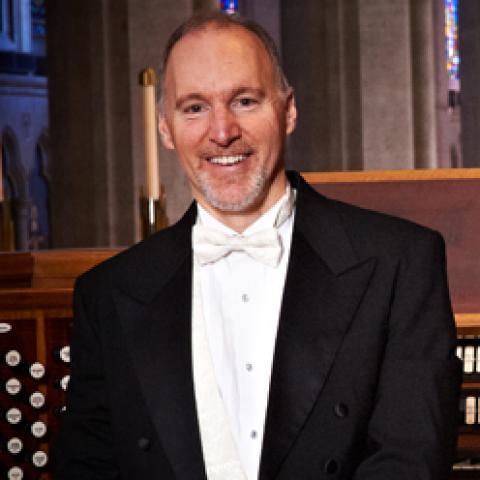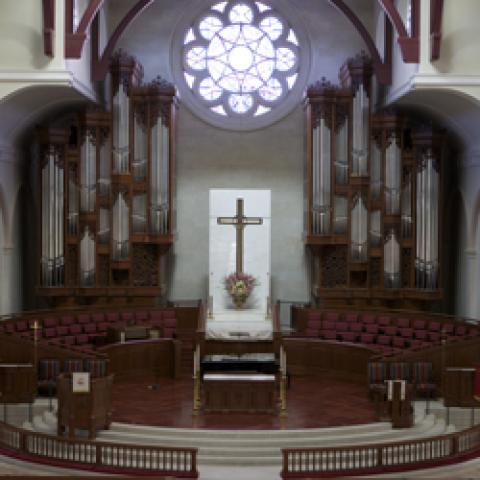
Concert organist Jonathan Dimmock has distinguished himself through his dazzling and highly sensitive performances in churches, major concert halls, music festivals and cathedrals throughout the world. Lauded for his diverse repertoire and his engagement with audiences, his performing is marked by both musical depth and a distinctive accessibility, causing audiences to warm to him immediately. Cited by the Natal Mercury (South Africa) for “musicianship, taste, and unostentatious virtuosity,” and described by the Adelaide Advertiser (Australia) as playing in such a way that “the organ has rarely sounded more clear and multi-hued than in his very expert and virtuoso hands and feet,” Jonathan is considered by many to be one of the leading musicians in his field.
A graduate of Oberlin Conservatory, Yale School of Music and Yale Divinity School, he became the first American ever to hold the prestigious position of Organ Scholar of Westminster Abbey. He then went on to serve two American cathedrals, St. John the Divine in New York City, and St. Mark’s in Minneapolis. Jonathan now resides in California, serving as Organist of St. Ignatius Church, San Francisco.
His teachers and mentors include Dame Gillian Weir, Peter Hallock, Paul Halley, Simon Preston, and Jean Langlais. He is a published composer and writer, and his CDs appear on labels including Gothic, Time-Warner Recordings, and BCI Records. His solo Bach recording received Grammy nominations in three categories and he has been interviewed and featured on National Public Radio, Radio France and BBC3.
Jonathan Dimmock will perform at Peachtree Road United Methodist Church,
3180 Peachtree Road N.W., Atlanta, GA 30305
404-240-8212
www.prumc.org






